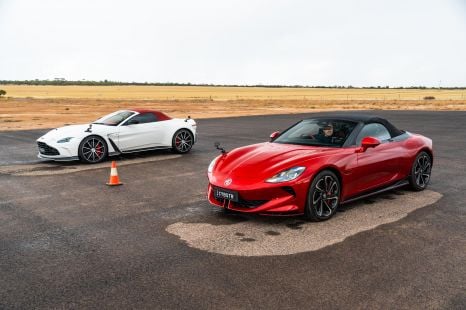

Paul Maric
6 Months Ago

Contributor
Porsche has gone ahead and done it.
It’s finally revealed the production version of that high-riding 911 we’ve seen lapping the Nurburgring over the last few years, dubbed the 911 Dakar.
No version of the 911 is what you’d call common, but the Dakar will be rare. Just 2500 will be offered worldwide, with pricing to kick off at $491,400 before on-roads costs. The optional Rally Design Package adds $54,730 before on-roads to that sticker.
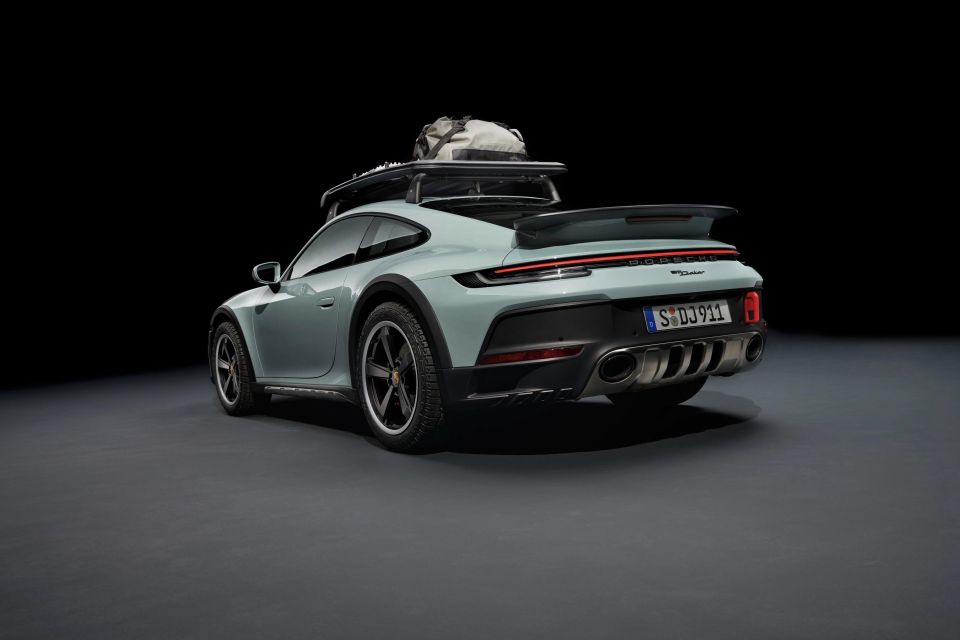
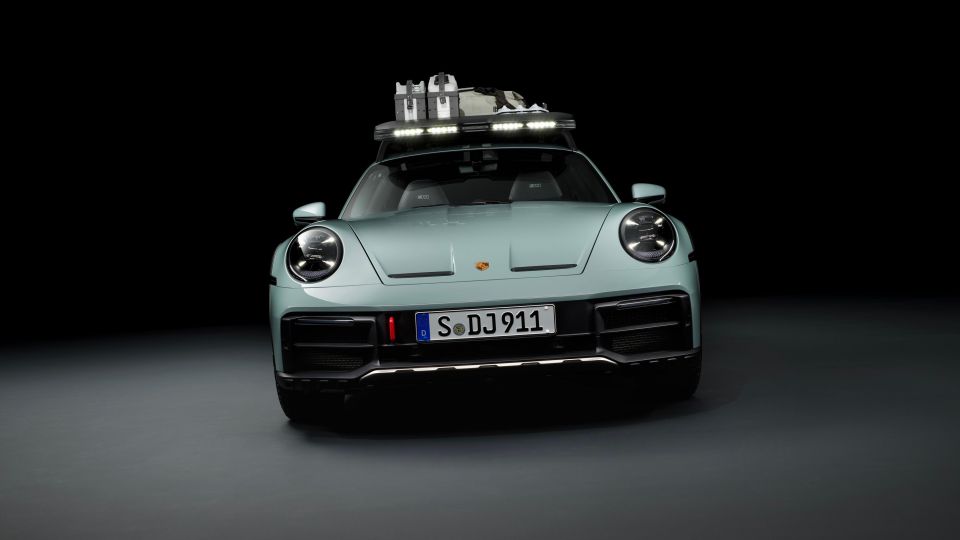
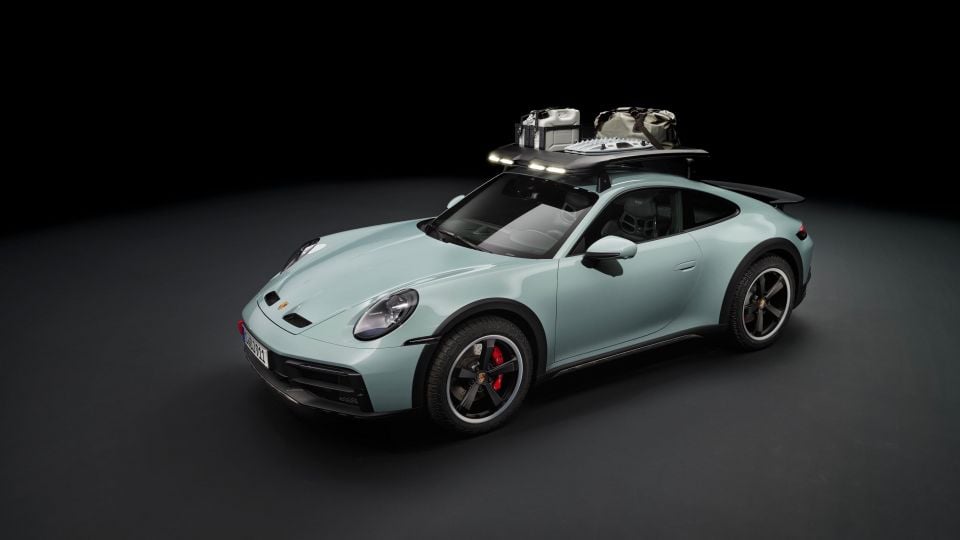
Deliveries of the Dakar kick off in the second half of 2023 for Australia.
Under the skin, the Dakar borrows from a number of different 911 models.
Power comes from a 3.0-litre twin-turbo flat-six making 353kW of power and 570Nm of torque, the same as you get in a Carrera GTS, mated with an eight-speed dual-clutch transmission and all-wheel drive. The 100km/h sprint takes a claimed 3.4 seconds.
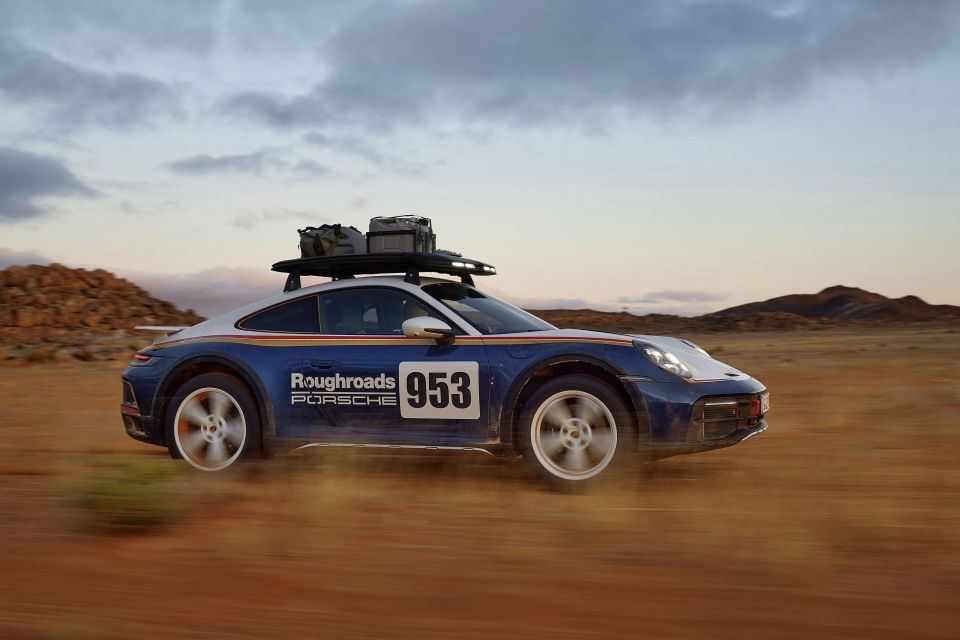
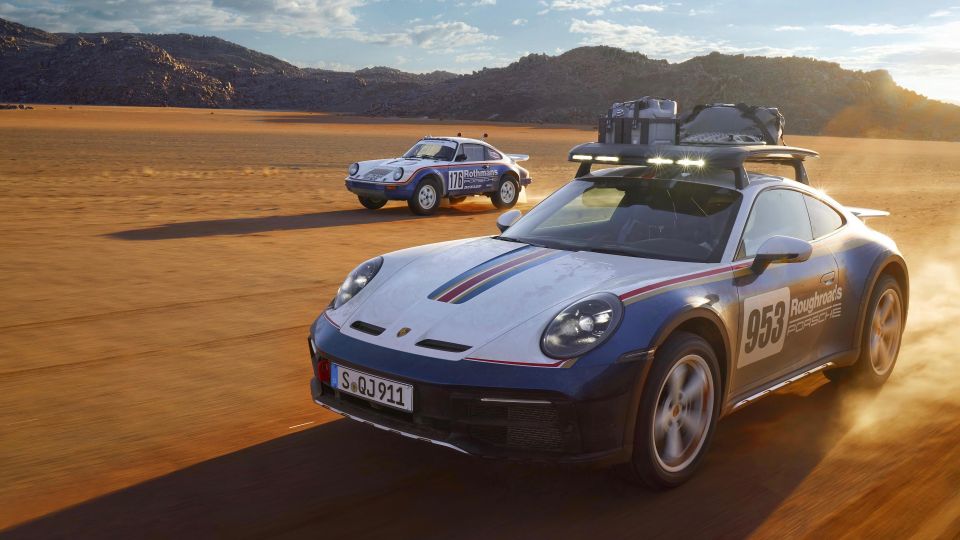
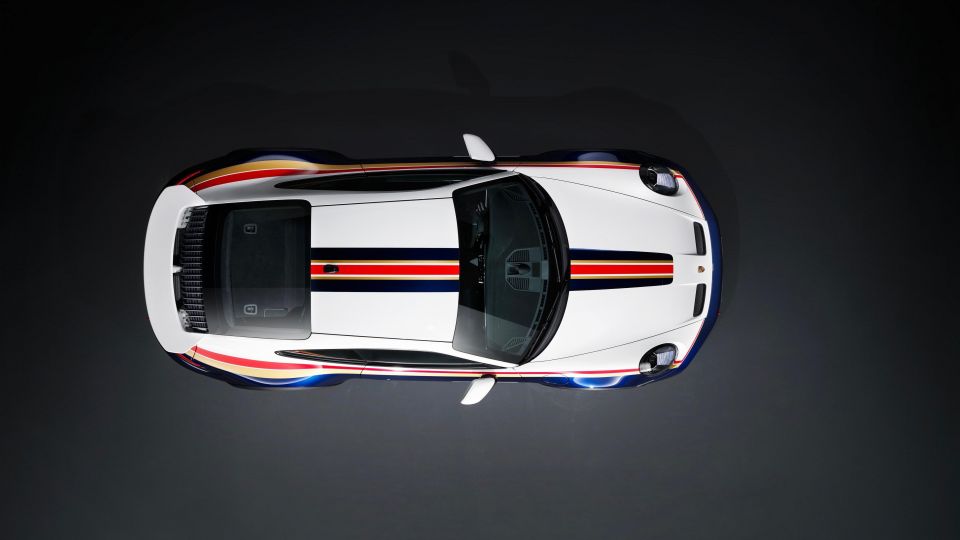
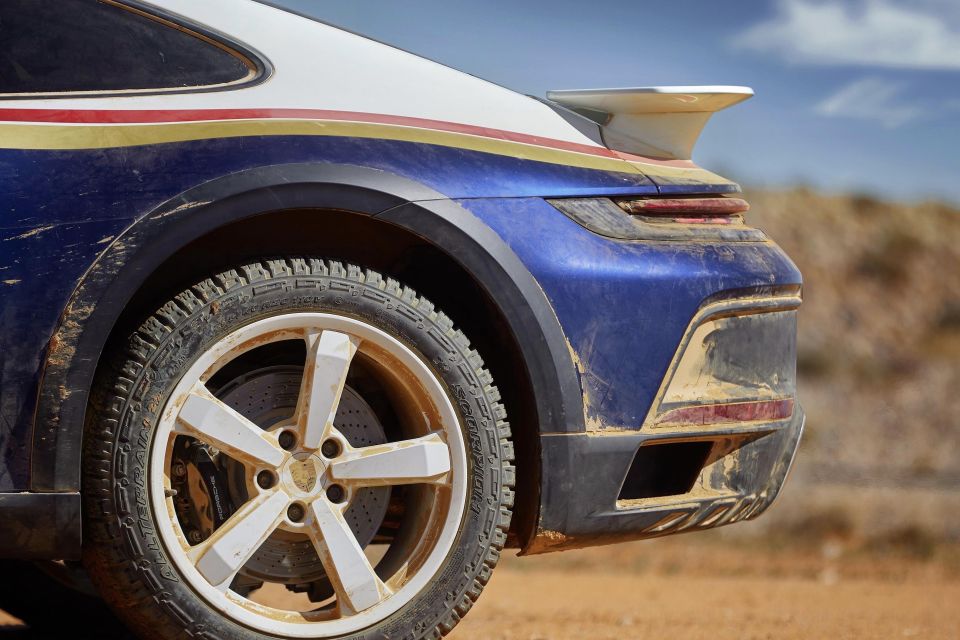
The engine mounts have been lifted from a GT3, and there’s active roll stabilisation on hand to keep the taller body in check.
How much taller? At a standstill the Dakar is 50mm taller than a regular Carrera, and it’s able to be raised a further 30mm when conditions demand it.
To use Porsche’s words, the “lift system is not designed merely for driving over obstacles at low speeds, but is rather an integral part of the re-tuned suspension. The ‘high level’ setting is available for ambitious off-road adventures”.
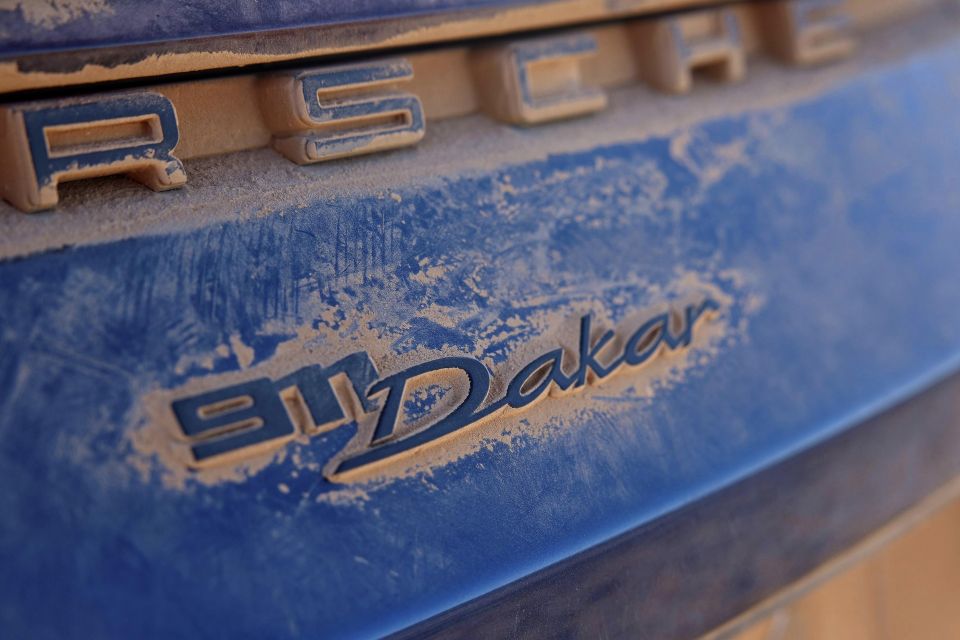
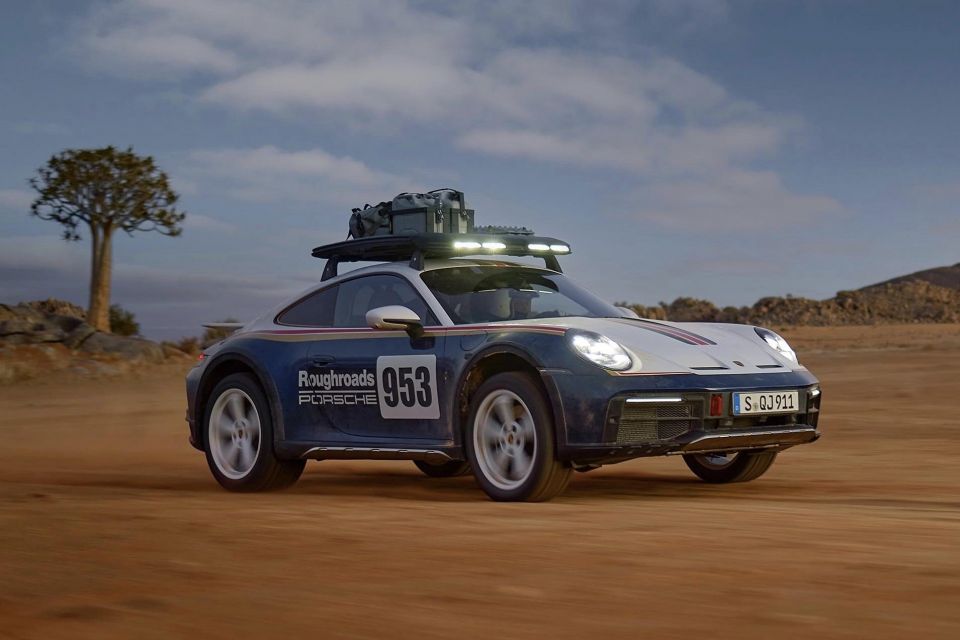
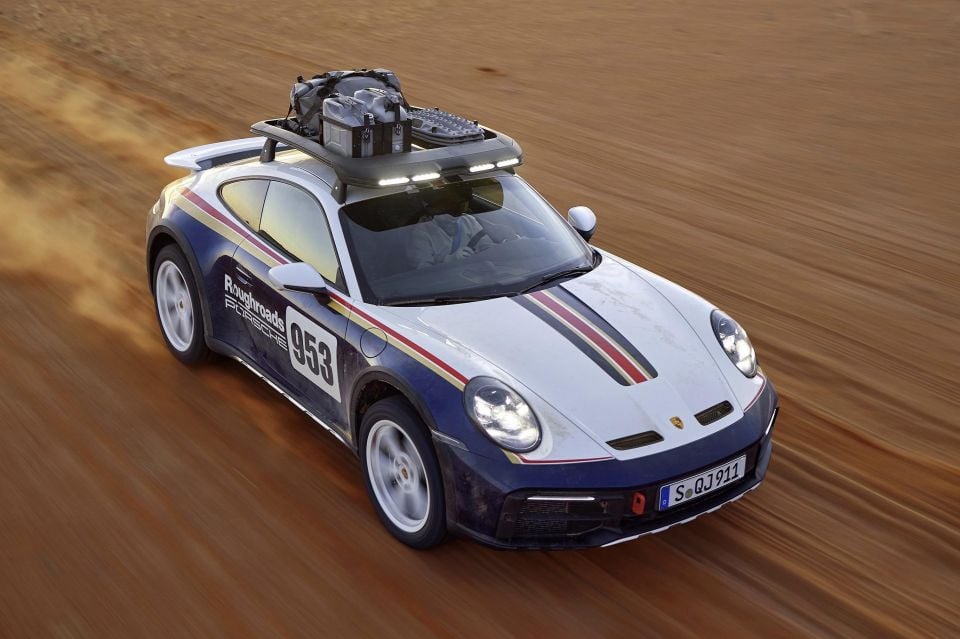
A set of reinforced road tyres is offered, but the standard rubber is more off-road focused: A set of Pirelli Scorpion All Terrain Plus tyres measuring 245/45 R19 at the front and 295/40 R20 at the rear, with 9mm-deep tread and reinforced sidewalls.
Two new drive modes are offered: Rallye, which shunts power to the rear axle to liven the car up on loose surfaces, and Off-Road for when the going gets rough. Both modes have a new launch control system designed for loose surfaces, too.
If the raised ride height isn’t enough of a giveaway, the Dakar will stand out from other 911 models thanks to its rear wing, red aluminium towing hooks, wider body, and external 12V outlet on the roof.
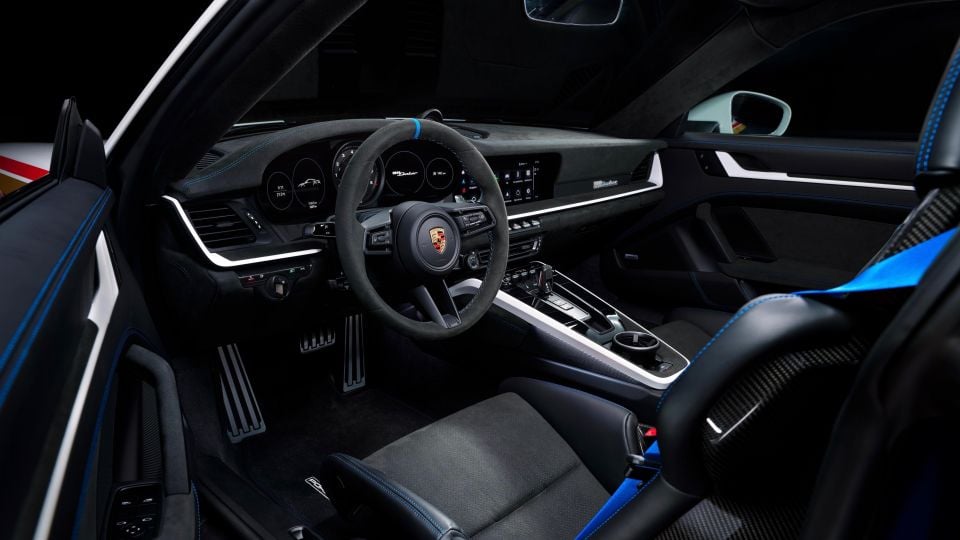
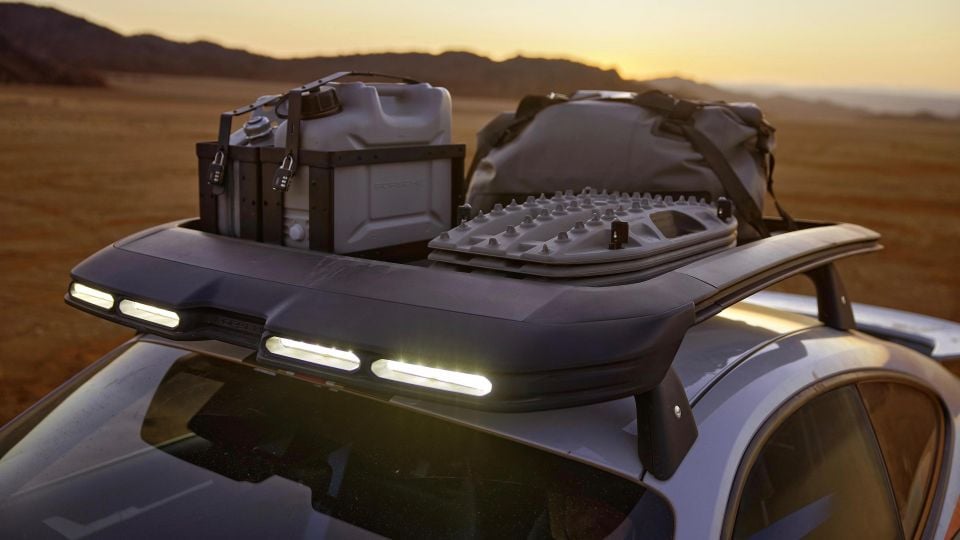
Inside, the Dakar features fixed bucket seats up front, and no rear seats. Thinner glass is standard, as is a lightweight battery, to help keep the weight down relative to the wider 911 range.
If that isn’t enough, the Rallye Design Package brings a two-tone white and blue finish with red and gold stripes, in a nod to the heavily reworked 911 that won the 1984 Paris-Dakar rally.
MORE: Everything Porsche 911
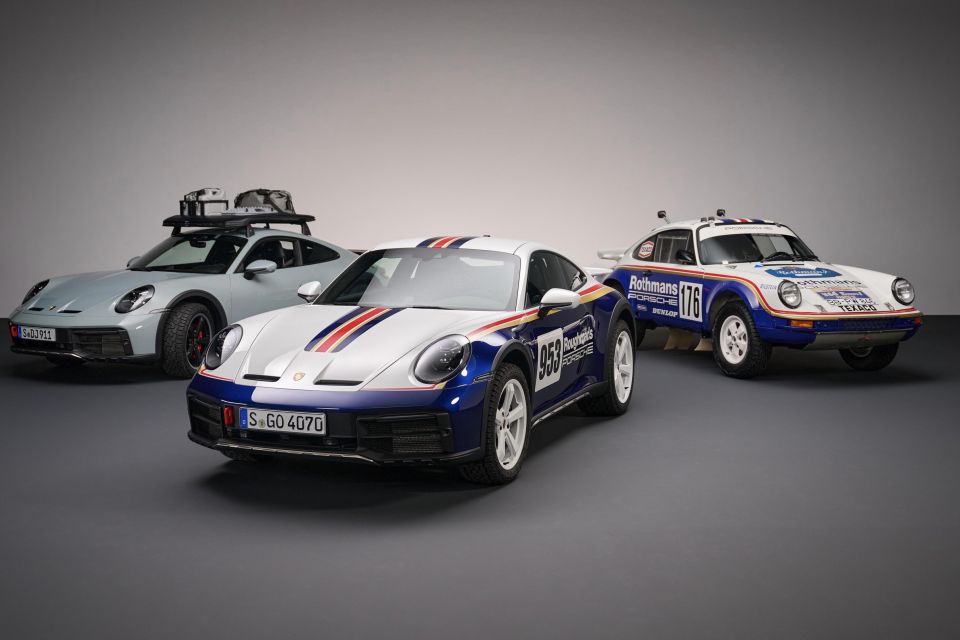
Take advantage of Australia's BIGGEST new car website to find a great deal on a Porsche 911.
Scott Collie is an automotive journalist based in Melbourne, Australia. Scott studied journalism at RMIT University and, after a lifelong obsession with everything automotive, started covering the car industry shortly afterwards. He has a passion for travel, and is an avid Melbourne Demons supporter.


Paul Maric
6 Months Ago
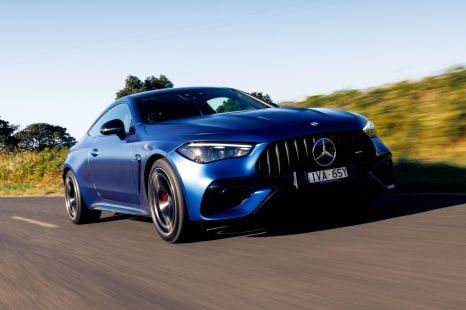

Josh Nevett
5 Months Ago
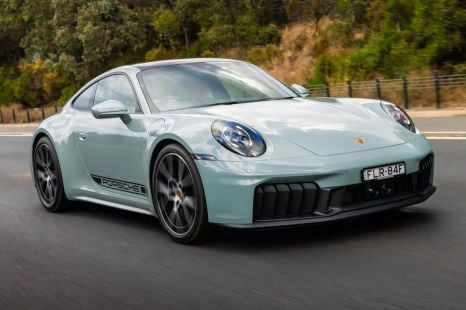

Alborz Fallah
4 Months Ago
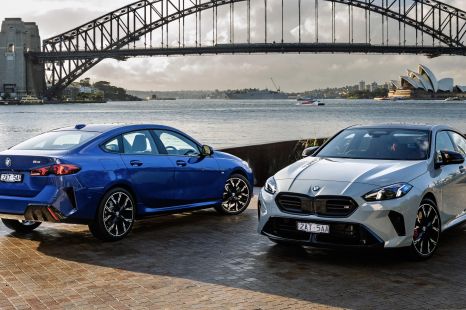

Max Davies
3 Months Ago


William Stopford
17 Days Ago
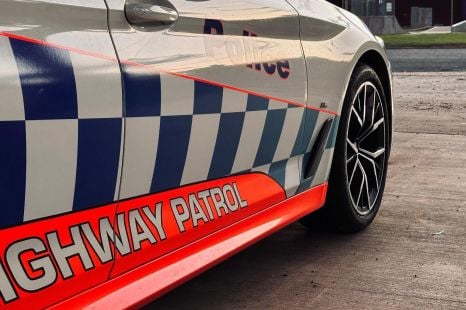

CarExpert
15 Days Ago